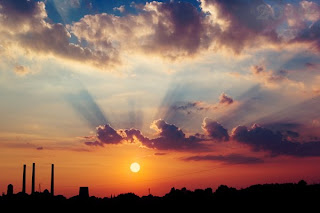
This is a reference with regard to Russia, then I immediately thought we must have a post about it! Advantage to say we did a new partnership and will have the 1st draw here ^ ^
St. Basil's Cathedral (Russian Собор Василия Блаженного) is a cathedral located in Red Square of Moscow, Russia. It is known worldwide for its features domed bulb.

HISTORY
Belonging to the Russian Orthodox Church, the cathedral had its construction ordered by Czar Ivan the Terrible to commemorate the conquest of the Canton of Kazan, which took place between 1555 to 1561. In 1588 the Tsar Fyodor Ivanovich commanded to add one new chapel on the east side of the building, above the tomb of St. Basil the Blessed, by saint whose name was popularly called the cathedral.

St. Basil's is located at the southeast end of Red Square, just across from the Kremlin Spasskaya Tower. Being not very large, consisting of nine small chapels.

In a garden in front of the church has a bronze statue erected in honor of Dmitry Pozharsky and Kuzma Minin, who gathered volunteers for the army that fought against the Polish invaders during the period known as Time of Troubles.

The initial concept was to build a group of chapels, each dedicated to every saint on whose day the Tsar won a battle, but the construction of a central tower unifies these spaces into a single cathedral. The legend says that the Czar Ivan blinded the architect Postnik Yakovlev, to prevent build a more magnificent building for anyone else.

Interior of the Cathedral of St. Basil's Cathedral should not be confused with the Moscow Kremlin, which is situated in Red Square, the same place where St. Basil's Cathedral is situated.
video with images from inside the Cathedral:
Source: Flickr: Christian im Morgenland, sftrajan, Ginas Pics, denevt, Marantz, Wikipedia and YouTube.























